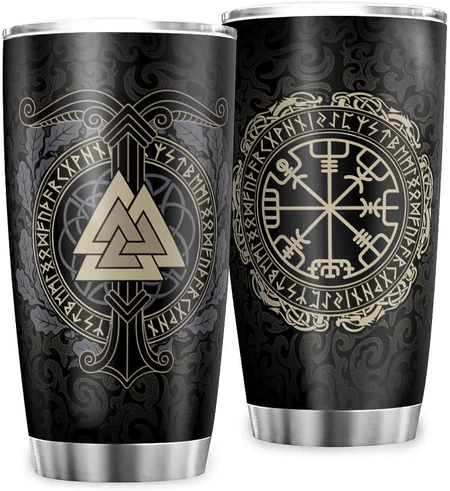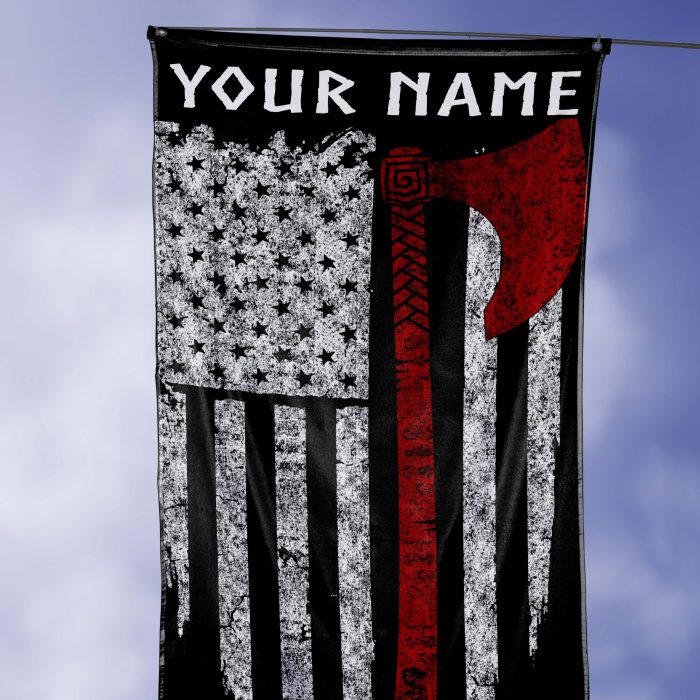Style
Helm of Awe – Aegishjalmur – Norse Mythology
Norse mythology is known for its many symbols. After all, runes themselves were sorts of symbols and were the favourite way of Viking communication. That being said, whenever most of us think about the runes we know, the first shape that comes to mind is a shape of a snowflake with endings resembling tridents. Curiously enough, this symbol is not a rune. In Norse mythology, that is a symbol known as the Helm of Awe symbol.
WHAT DOES THE HELM OF AWE MEAN?
The Helm of Awe (Ægishjálmr in Old Norse) has no meaning by itself. Much more important for Viking culture is what it represents. It is probably the most powerful symbol in the entire Norse mythology. Its origins in the Viking mythology comes from Poetic Edda. In its 16th stanza Fáfnismál, furious and destructive dragon Fafnir, who was previously cursed by Andvari’s gold, claims the Helm of Awe to be the source of his might in these verses:
The Helm of Awe
I wore before the sons of men
In defense of my treasure;
Amongst all, I alone was strong,
I thought to myself,
For I found no power a match for my own.
From these verses, we can see that for most Vikings, and the writer of these lines, represented through dragon Fafnir, the Helm of Awe is a symbol of might.
When it comes to classic Viking sources, outside of Poetic Edda, we can find the Helm of Awe in the 17th-century Icelandic grimoire called Galdrabók but where the Helm of Awe has only four arms, as opposed to original eight arms and a slightly less complex design than the original.
When it comes to Viking soldiers themselves, they would often draw it between their eyes a symbol of strength over their enemies. They also put them on their shields or inside of their helmets as a symbol of protection.
When it comes to runes, we have already mentioned that the Helm of Awe is not a rune itself, but it has many connections to the runes because many Germanic runes have the similar shape as the parts of the Helm of Awe. So, when we think about that, even though the Helm of Awe has its roots in the Viking culture, we feel free to say that it can be connected to all Germanic people via runes.
DOES HELM OF AWE REPRESENT EVIL?
This question is a difficult one because the modern concept of religion, culture and morality and the idea of good and evil is not the same as it was in the times of the Vikings. For us, modern people, something that causes terror among others is something to be frowned upon in the least. Norse religion and culture didn’t think like that at all. The basic idea for them was to show courage, fight well and reach Valhalla. Now, if there was a certain magical object that could help them on that road, either to provide protection or to chase away the fear, well, there was nothing wrong about it.
There is actually a lot of dispute regarding the form of the Helm of Awe. Many modern runologists and linguists led by Stephen Flowers, think that the form of the Helm of Awe has changed over time. In the beginning, in Poetic Edda, it had a physical form, and its shape was spherical. It was associated with snakes – hence its connection to dragon Fafnir. After that, in Icelandic grimoire, it lost all connection to the physical world. Its origin was magical, and its source of power was pineal gland (that is why it was drawn between the eyes since that point was considered the central point of energy in a lot of ancient cultures), and it was connected with the life energy. Through that, it would use magic to help a warrior defeat his opponents, instil courage in him and strike fear from his heart.
So, to answer the question, is the Helm of Awe evil? Well, in its original form, as the thing that ancient Fafnir used for the protection you could probably consider it evil in the modern use of that word. On the other hand, in its Icelandic form and how Viking soldier used it, meaning, to get a little help on his way to Valhalla, defeat his enemies, and protect his life using magic, no one could call it evil so quickly. The best way to look at it is as an object of power which used to assist men in battles in times before ours. It is similar to weapons. Though they may have intimidating power without someone wielding them, they can’t cause much harm. Also, like weapons, it could be used for protection.
Besides that, if you are not a religious person, you can find this object fascinating as a symbol which had a great influence on Norse culture, and you could have trouble finding a rune which has no connection to this symbol whatsoever.
HOW DO I GET THE HELM OF AWE?
New age popularity of Norse mythology has brought this symbol (along with other Viking symbols) back in use. It is usually seen as a tattoo on the arm. If you fear how the tattoo would look like and would like something less permanent, there is great stuff to be found which have this symbol carved on them. If you are for something that combines the spirit of new times with the great times of Vikings, there are watches with arms of the Helm instead of the watch’s hands. If you are for something little more classical, there are rings that have the Helm symbol on them. Of course, there are blankets, helm of awe hoodies, t-shirts and a lot of other options.
CONCLUSION
As you now know, there are a lot of different explanations regarding the Helm of Awe. It may be a good sign; it may be a bad sign. It may be a symbol of might, or it may be a symbol of protection. It’s up to you to choose what kind of meaning would you like it to have.
Until our next meeting,
Source: Wikipedia


















